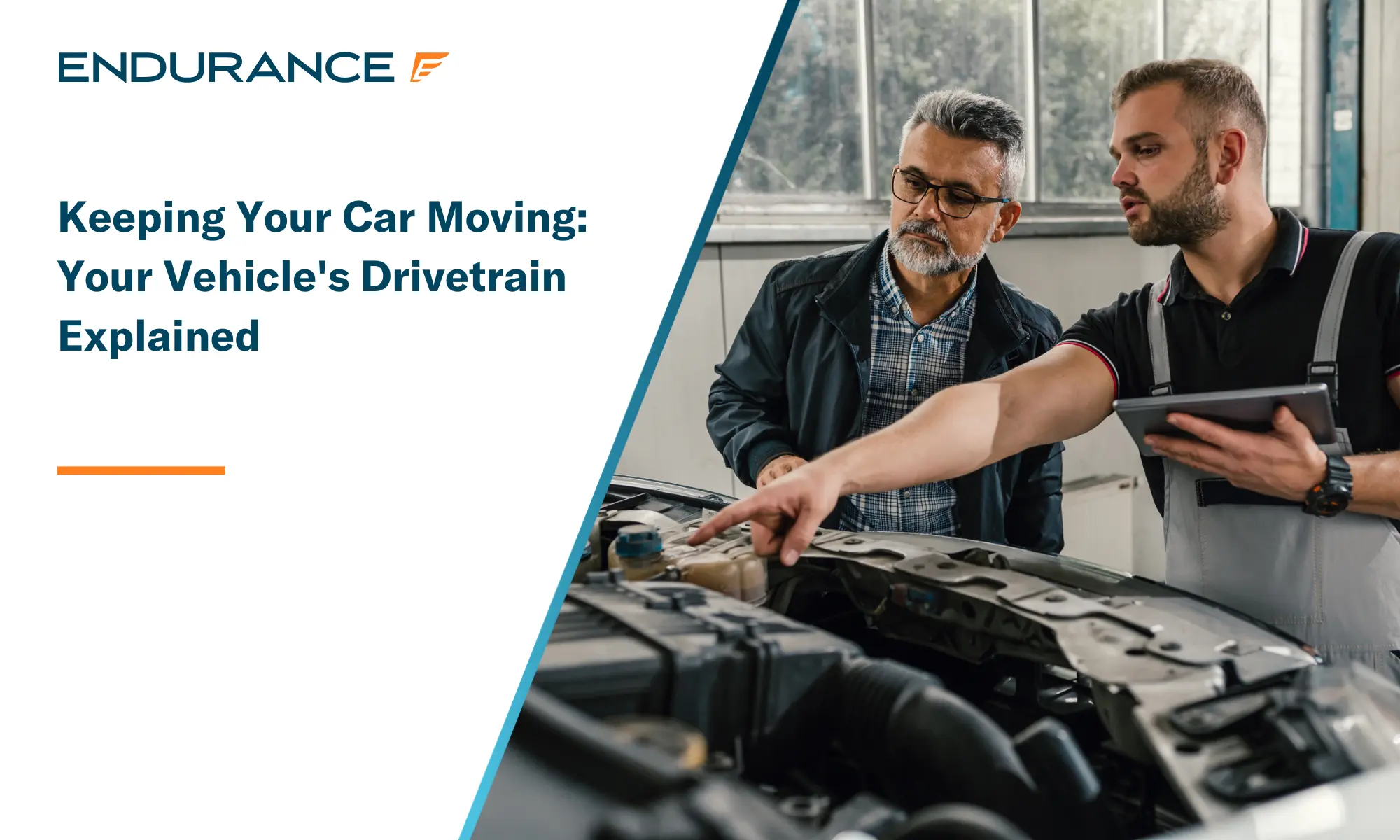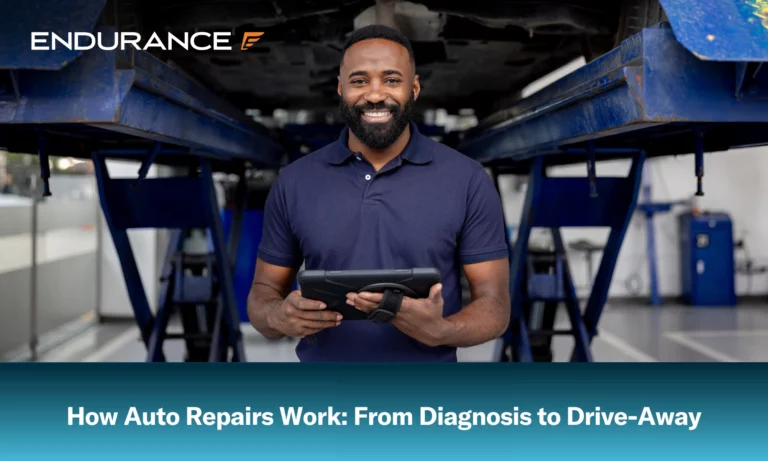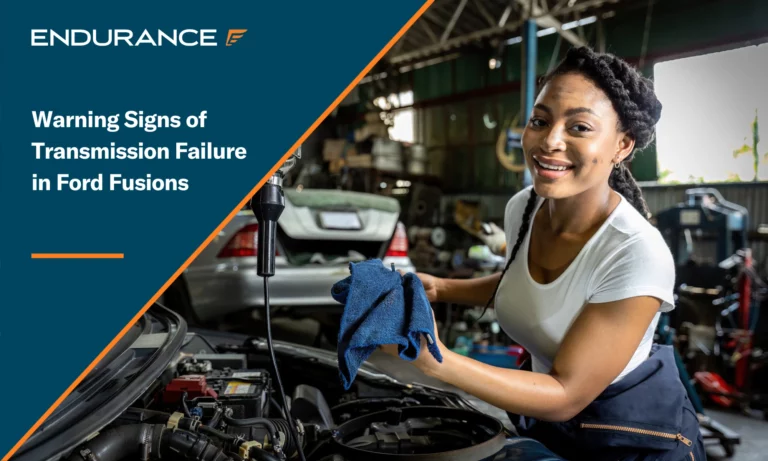Keeping Your Car Moving: Your Vehicle’s Drivetrain Explained

Your car’s ability to navigate the roads seamlessly is a complex dance of many components working together. Many components under the hood come together to serve a broader system, and the drivetrain is one such system.
Learning everything you need to know about a vehicle’s drivetrain, including its components and necessary maintenance, can help you safeguard this critical system.
What Is a Drivetrain?
At its core, the drivetrain system of an automobile is the mechanism that connects the engine’s power to the wheels, thus propelling the vehicle forward. Understanding the different parts of the drivetrain is essential for comprehending how power is distributed among the wheels. Different drivetrain variations include front-wheel drive (FWD), rear-wheel drive (RWD), all-wheel drive (AWD), and four-wheel drive (4WD).
The main difference between these drivetrains is where the power is sent. On a front-wheel drive vehicle, the power is distributed to only the front wheels, and the rear wheels follow. Alternatively, power is directed to the rear wheels on a rear-wheel drive vehicle while the front wheels simply steer. As you may be able to guess by the name, an all-wheel drive system sends power to all of the wheels at once. Four-wheel drive is similar to all-wheel drive, but the latter is meant more for poor weather than off-road endeavors.
5 Components of the Drivetrain
As mentioned, the drivetrain system sends power to some or all of the wheels. Five primary subsystems make up the larger drivetrain, each of which serves a crucial role in the overall system.
1. Engine: The power source.
The engine is arguably the most important part of the overall drivetrain system, providing the power source. By triggering miniature controlled explosions with gasoline within the engine, the resulting power is transferred to torque energy for the wheels. Specifically, the pistons within your energy are sent jolting up and down from those explosions, which is the torque power the next component uses to get the wheels moving.
2. Transmission: The gear system.
You’ve likely heard of the transmission (or gearbox) under the hood of your car, but you may not know what it does. The transmission is typically composed of five and six-gear sets and a series of gear trains, which allow a driver to regulate the amount of power generated by the engine, which goes to the wheels. Essentially, the transmission is what allows you to maintain a slower or faster rate of speed by regulating the engine’s cranking.
3. Driveshaft: The transfer mechanism.
A lesser-known component within the drivetrain system is the driveshaft. The driveshaft is a long metal tube that transfers power from the transmission to the differential (a part that will be discussed further below). The driveshaft works by rotating at different speeds depending on how much power the transmission is attempting to pull from the engine. At a 1:1 power ratio, the driveshaft spins at the same speed as the engine. The driveshaft spins slower when the transmission reduces gears to reduce speed. Along the same vein of thinking, the driveshaft spins faster when the transmission is in overdrive.
4. Differential: Distributes power to the wheels.
The purpose of the differential is crucial to the overall movement aspect of the drivetrain system. A differential takes the torque from the driveshaft and absorbs the movements, transferring power from the prior two components. This power is then transferred to the wheels, yet split, allowing the wheels to turn at a different speed, helping the vehicle move.
5. Axles: Connect to the wheels.
Finally, the last aspect of the drivetrain system is the axle itself, which is the mechanical link between your transmission and the wheels. The axle shaft converts the energy pulled from the differential so that the wheels turn. However, the primary purpose of the axle is to retain the position of two wheels to one another while retaining the position of the other two wheels in another state. For example, when you go to turn, your front wheels will both turn to the right an equivalent amount, and your rear wheels will simply follow.
Maintaining Your Drivetrain
As evident from the above, the drivetrain is a complex grouping of major parts under your vehicle’s hood. You can likely imagine how important maintaining this entire system is. To that end, drivers should follow a few crucial tips to keep their drivetrain system working properly:
- Conduct fluid checks. Two of the most important fluids under the hood are the transmission and differential fluids. It’s recommended to replace your transmission every 30,000-60,000 miles and your differential fluid at the same rate.
- Take care of periodic inspections. Each part of the drivetrain system requires periodic inspections at different rates. Refer to your owner’s manual for the engine, transmission, driveshaft, differential, and axles to determine when to take your vehicle in, but as a general rule of thumb, don’t miss the major milestone check-ins.
- Have alignment checks performed. Having your wheels and overall axle aligned is important for keeping your vehicle moving down the road in a straight line. The wheels on your vehicle should be aligned roughly every 6,000 miles for optimal performance.
Drivetrain Problems and Diagnosis
No matter how much maintenance you perform on your drivetrain, it’s always possible that something can go wrong with the system. Regardless of whether you have a FWD vehicle, RWD, AWD, or 4WD, consider looking for the following signs of problems with the drivetrain system:
- Odd noises or vibrations stemming from the front of your car
- Performance issues when you step on the gas pedal or attempt to brake
- Burning smells coming from the engine
- The check engine light turns on in conjunction with other problems
- Weird fluid begins to look from the front end of your vehicle
- There is a delayed shift occurring on your vehicle
Unfortunately, the bulk of issues with the drivetrain will need to be diagnosed by a professional automotive technician. This is because the problems occur with the major parts under the hood that the average person cannot determine.
The Role of Extended Warranties in Protecting Your Drivetrain
Extended warranties or vehicle service contracts, such as those offered by Endurance, significantly protect your drivetrain and overall vehicle health. These warranties cover certain drivetrain repairs and replacements, alleviating financial stress for car owners. Real-world scenarios attest to the value of extended warranties, where they have saved customers substantial repair costs and provided peace of mind on the road.
Beyond protecting the overall drivetrain system, many extended warranty packages offer specialized coverage for the parts that make up the drivetrain itself. When something goes wrong with these parts, so long as the warranty contract covers it, the repair will be covered, which takes away financial considerations.
However, certain warranties offered by dealerships may only cover certain items, such as a powertrain warranty, which only covers parts associated with the powertrain. On the other hand, a bumper-to-bumper warranty means nearly everything between the bumpers is covered by the contract.
How Endurance Can Protect Your Drivetrain
No driver wants to be headed down the road in their vehicle only for something to go wrong under the hood, apparently. Noticing odd vibrations or hearing troubling noises can quickly lead you to pull over on the side of the road. The only thing that can make this situation more tolerable is finding out that the problematic part can be covered by an extended car warranty, more accurately known as a vehicle service contract.
Endurance Warranty offers customizable plans for drivers of all types. For example, our Superior plan covers the most common parts that break down over time, such as the car engine, front and rear drive axle, air conditioning, and more. The Secure Plus plan is more niche in that it is affordable coverage designed for older vehicles, thus protecting only the most integral parts. In addition, our Supreme plan is the closest offering to near bumper-to-bumper coverage, with even small components such as gaskets included in the coverage.
Whether you have an automatic transmission or manual transmission, an auto protection plan from Endurance can help protect your drivetrain components. To learn more about how Endurance can help, call our award-winning customer service team at (800) 253-8203 to request a FREE quote. You can also shop online to see your price right away!













With over three decades of professional experience in the automotive industry, Dario brings a wealth of knowledge and expertise to the Endurance team. He hails from Argentina, where he received his technical trade education and pursued mechanical engineering. Read more about Dario.